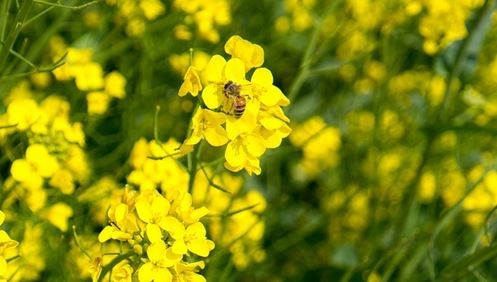WHY ARE SOME INSECTICIDES DANGEROUS FOR BEES?

Farmers and large agricultural organisations that use pesticides from around the world are setting out to eliminate pests and insects that can cause widespread damage to their crops and damage business. However, bees, which are not usually the target of insecticides, can become collateral damage.
A group of scientists recently set out as part of the Task Force on Systemic Pesticides to examine the impact of neonicotinoid and fipronil pesticides on bees and the environment. The international research looked at more than 800 scientific studies published in the past 20 years on these pesticides that make up about 40 percent of the pesticide market and are used in 120 countries.
The conclusion of the TFSP, a body formed in 2011 by the International Union for Conservation of Nature Species Survival Commission and the Commission on Ecosystem Management, was that there should be tighter regulations on neonicotinoid and fipronil pesticides. Farmers want bees to be near their food, as many types of produce rely on these insects to pollinate basic foods.
"Seventy-five percent of the crops that we eat are pollinated by insects of one type or another – mostly by bees," report author Dave Goulson explained. "So, if we did not have those bees – if we do not look after them – then we will not have most of the fruits that we like to eat, most of the vegetables that we like to eat. We would be eating porridge, rice, bread – not much else. Life would be awful."
Goulson's warning underscores the importance of safe and proper pesticide usage. Commercial farmers and agriculture businesses should ensure that they are using pesticides that match up with their goals. Proper testing of pesticides to avoid neonicotinoids and fipronil may be important to avoiding disruptions in food production by keeping bees nearby and preventing pollution of the land.
How do these pesticides affect bees?
Although these two insecticide chemicals were not designed to kill bees or keep them away from crops, they can still have a variety of lethal and sub-lethal consequences when consumed orally or through contact, which were examined in a 2012 study published by a team of European researchers in the journal Ecotoxicology.
When ingested these chemicals can directly kill bees. Worker bees who are in close contact with the chemical may die from exposure over time. More long-term effects may be non-lethal consequences of these chemicals, such as slowing down bee reproduction by contaminating the food given to larvae. The insecticides also can cause confusion in the bees and limit their ability to pollinate correctly. They may interfere with the bees' abilities to hibernate or move agilely, too.
It has also been found that bees affected by these pesticides produce fewer queens and have more trouble collecting food and successfully reproducing.
The effects that these two pesticides can potentially have on bees should be examined by farmers who rely on bees for pollination as much as pesticides for high yields.
CONTACT US
Tel: +44 (0) 151 649 4000
Email: marketing@greyhoundchrom.com
FOLLOW US
YOU MAY ALSO BE INTERESTED IN OUR NEWSLETTER















